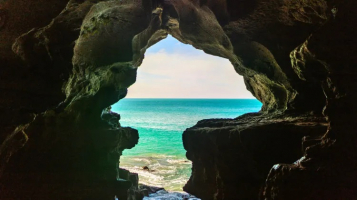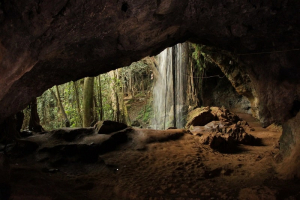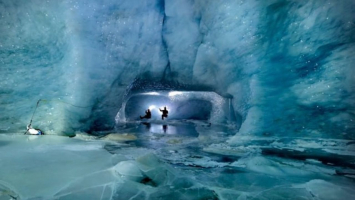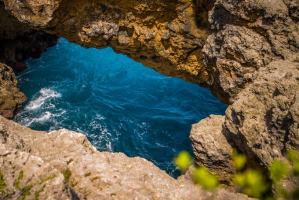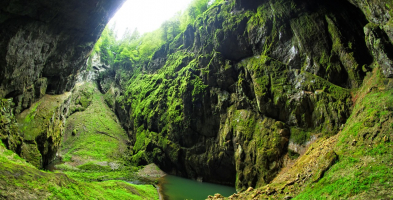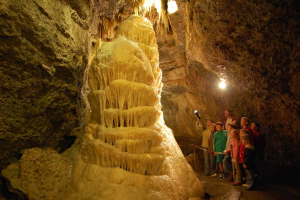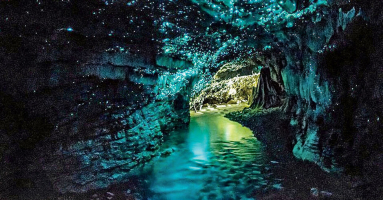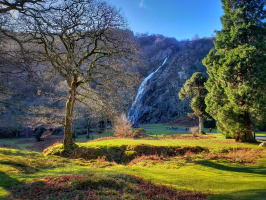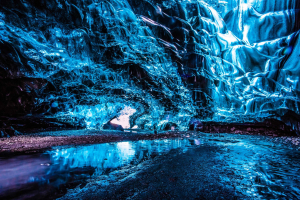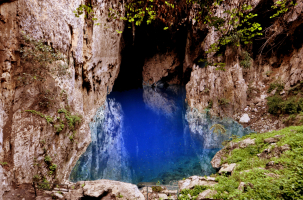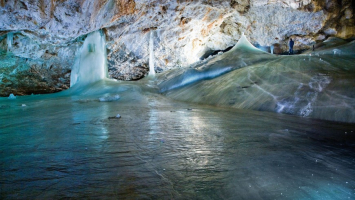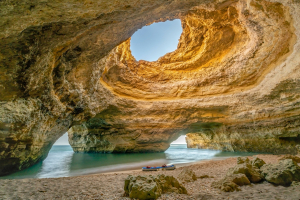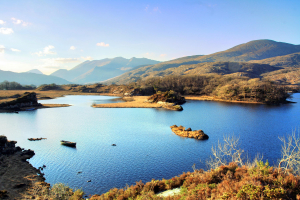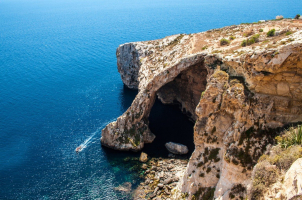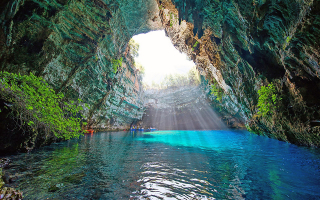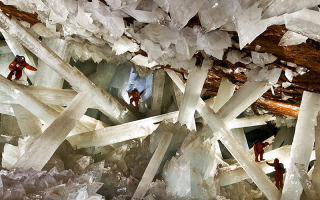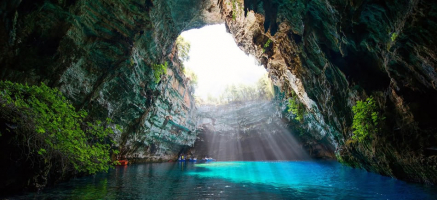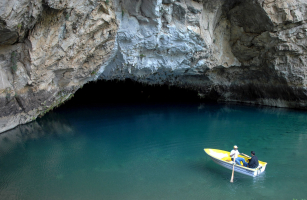Top 7 Most Beautiful Caves in Ireland
For millennia, caves have captivated the human imagination. Countless legends and folklore have revolved around these mysterious structures, and many books and ... read more...television shows continue to capitalize on their allure. Ireland is home to some of Europe's largest and most impressive caverns, but which will you choose to explore first? To get you started, here is a list of the top ten caves in Ireland. The Most Beautiful Caves in Ireland are listed below.
-
Bruce's Cave is the Most Beautiful Cave in Ireland also known as the Dunskellie Grotto, is a small and mostly artificial cave located about 9 meters above the Kirtle Water in Cove, Kirkpatrick-Fleming, Dumfries, and Galloway, Scotland. It has been linked to Robert the Bruce and the famous incident involving the spider struggling to weave its web.
Bruce's cave is located on the south side of the Kirtle Water on a red sandstone cliff above the watercourse. Steps cut into the rock provide access, as does a platform supported by timbers slotted into the cave through square holes cut into the rock. The pathway was built by the local council in 1927, after visitors were previously lowered on a rope over the overhang, from which they would swing into the cave, resulting in numerous accidents. The Bruce's Cave Caravan Park charges a small fee for parking and cave access. The cave is roughly circular with an alcove or aumbry to the right of the entrance, and tool markings are distinct in a number of areas. The dimensions are approximately 5 meters east to west, 4 meters north to south, and 2 meters high. The cave floor slopes east to west with the rock strata.
The cave opening is visible from the Kirtle Water level and is well above the river's flood level. The entrance has been altered several times, with a rebated entrance indicating an external door closing flush with the rock face and internal holes in the floor and ceiling that could have been for a pair of internally closing doors. A pair of square section holes on either side have been referred to as spy or ventilation holes, but they could be related to the need for large timber supports to support the external platform. 'Rock Doors' from Bruce's Cove are on display at the National Museum of Scotland.
Location: Rathlin Island, Ballycastle, Ireland
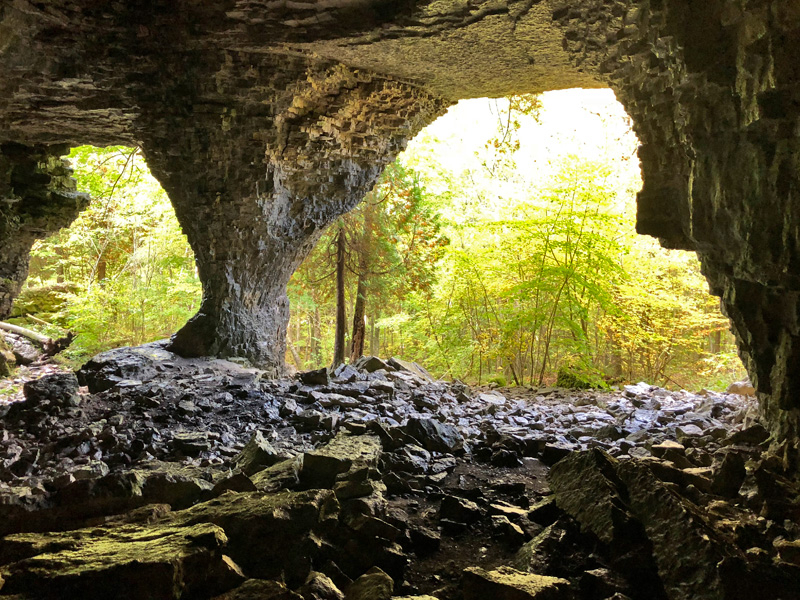
sobt.co.uk 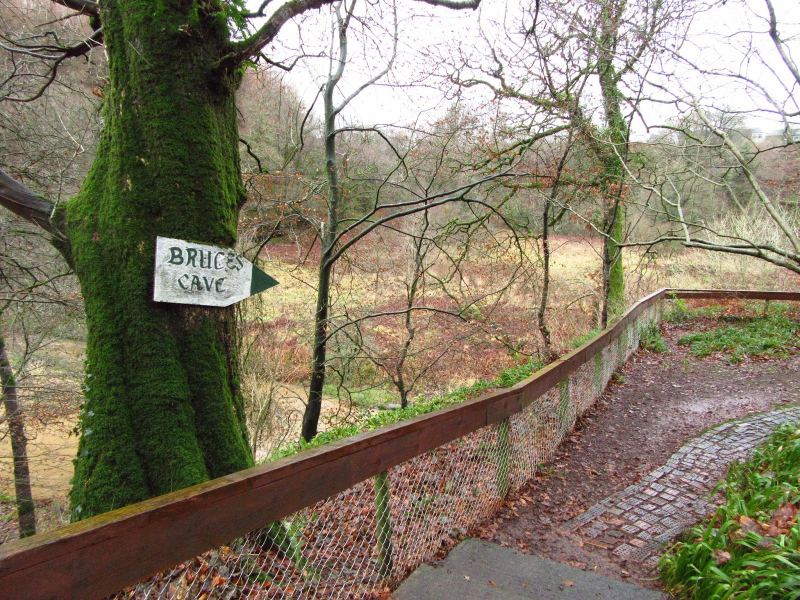
sobt.co.uk -
Aillwee Cave is one of the Most Beautiful Caves in Ireland a cave system in County Clare, located in the karst landscape of the Burren. Aillwee is derived from the Irish word Aill Bhu, which means "yellow cliff." It is privately owned and is part of the Aillwee Cave and Birds of Prey Centre.
The cave system consists of over a kilometer of passages leading into the mountain's heart. It has an underground river, a waterfall, and some massive stalactites and stalagmites. The remains of bears can also be seen inside the caves, and it has been suggested that it is the last bear den in Ireland. The cave is typical of the Clare caves, with a mainstream passage leading to a sump. The general direction is east to west, but about 600 meters (2,000 feet) into the cave, it turns due south.
The cave is much older than most of the Clare caves and once housed a large stream. The stream has almost completely vanished from the cave and has been heavily backfilled with glacial infill. The formations visible on the show cave tour are rarely older than 8,000 years, but calcite samples found in the cave's recesses have been dated to more than 350,000 years. In 1944, a farmer named Jack McGann followed his dog, who was chasing a rabbit and discovered the cave. The farmer did not go very far into the caves, and he did not tell anyone about his discovery for nearly 30 years. In 1973, he told cavers about the cave, and that summer it was explored all the way to a boulder choke. Soon after, show cave construction began. The boulder choke was removed in 1977, allowing access to the rest of the cave. The "Marine Blast" tunnel, which allows for a circular trip, was completed in 1992. The bones of two brown bears were discovered in 1976. These were later discovered to be over 10,000 years old.
Location: Ballycahill, Ballyvaughan, Co. Clare, Ireland
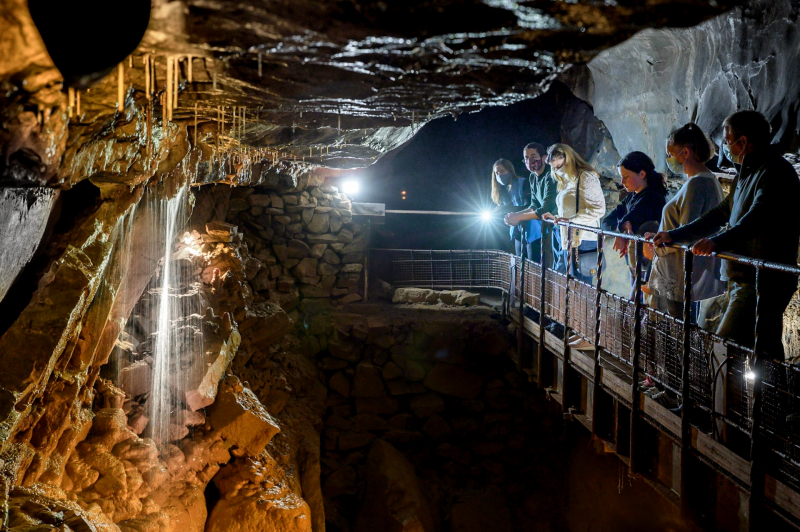
limerickleader.ie 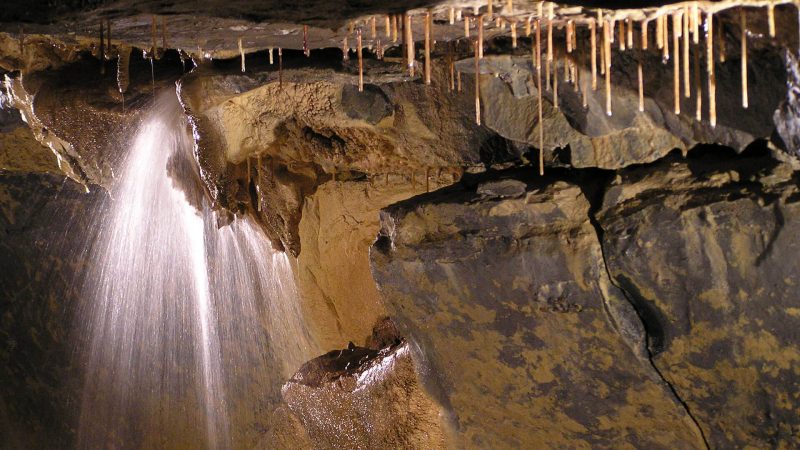
limerickleader.ie -
Doolin Cave is a limestone cave in County Clare, Ireland, near Doolin, on the western edge of The Burren. The name Poll an Eidhneáin is an anglicized version of the Irish name Poll an Eidhneáin, which translates as "Ivy Cliff Cave." Because of its development and marketing as a show cave in the early twenty-first century, the cave sparked some debate. It is now known as Doolin Cave and is open to the public.
The Great Stalactite is the cave's most notable feature. This is one of the world's longest known free-hanging stalactites, measuring 7.3 m (24 ft). This figure, however, causes some consternation because it is also variously described as 11 m, 6.2 m, and 6.54 m. It is Europe's longest known free-hanging stalactite, with the three largest in the world located in two caves in Mexico and one in Lebanon's Jeita Grotto.
John and Helen Browne purchased the land on which the cave is located in 1990. The couple made an effort to turn the cave into a show cave. The Speleological Union of Ireland expressed concern that the 30-meter (98-foot) shaft that would have to be blasted to gain access to the cave would damage the stalactite. They also objected to the caving trip being lost to cavers and the cave being a short artificial trip with only one feature. After a lengthy period of court proceedings, financing, and development, the cave was opened to the public in 2006 as a show cave, subject to the conditions of not having a visitor center on-site and limiting visitor numbers. The entrance shaft could not be built with blasting. Instead, the developers used a system in which a hole was drilled and an air expander was placed in the hole to break the rock.
Location: Craggycorradan East, Doolin, Co. Clare, Ireland
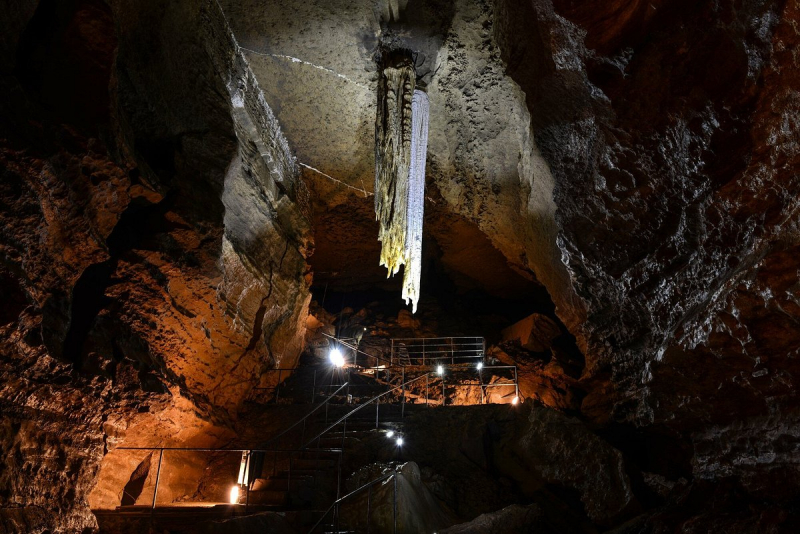
en.wikipedia.org 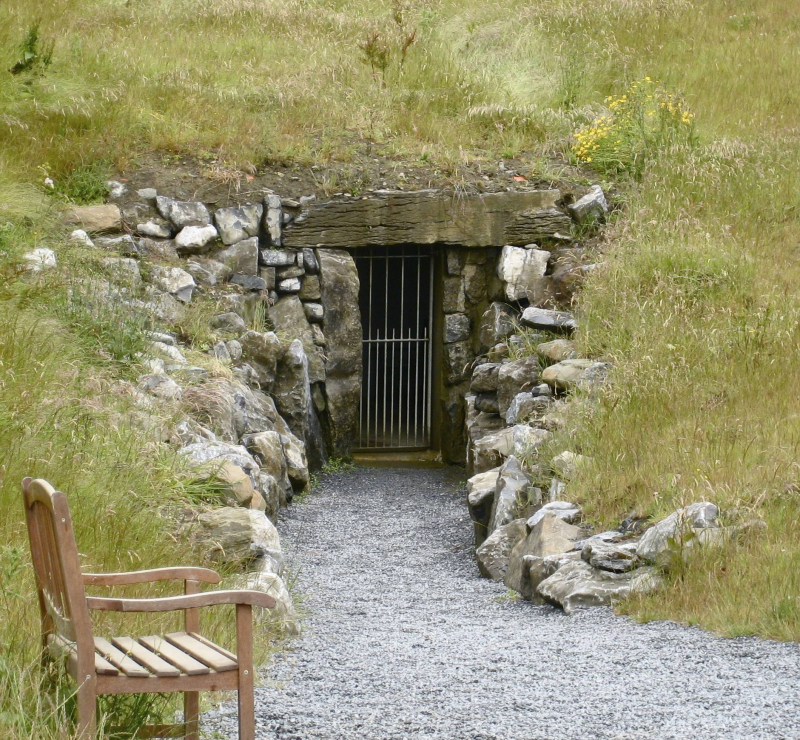
en.wikipedia.org -
The Maghera Caves and Port in Ardara, County Donegal, is one of the Most Beautiful Caves in Ireland and is located in one of Ireland's most scenic areas. Natural sea-erosion caves line a wide, silver beach beneath majestic mountains that conceal an ancient castle.
It's not so much that the caves are spectacular in and of themselves as the chemistry of the dark sea caves, the wide, dazzling silver beach that leads to them, and the wild, craggy hills above them that transports you to a magical wilderness. Man appears to have left little imprint on this powerful, vibrant landscape. The road to the caves runs along Loughros Beg's southern shore, cutting through steep-sided rock faces where streams tumble from their beds and free fall to the base of the cliffs. Assaranca Falls is the most spectacular of these. The massive beach occupies the inlet to your right, with the sea beyond seemingly held at bay by an invisible hand. You can park at a cottage and walk the signposted track to the dunes, beach, and the Maghera Caves, which are frowning beneath the quartzite rocks that roof them.
Location: Cloghboy, Ardara, Co. Donegal, Ireland
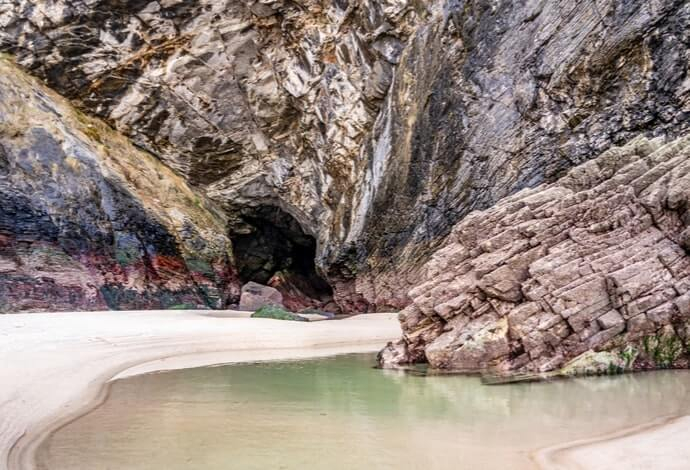
fr.depositphotos.com 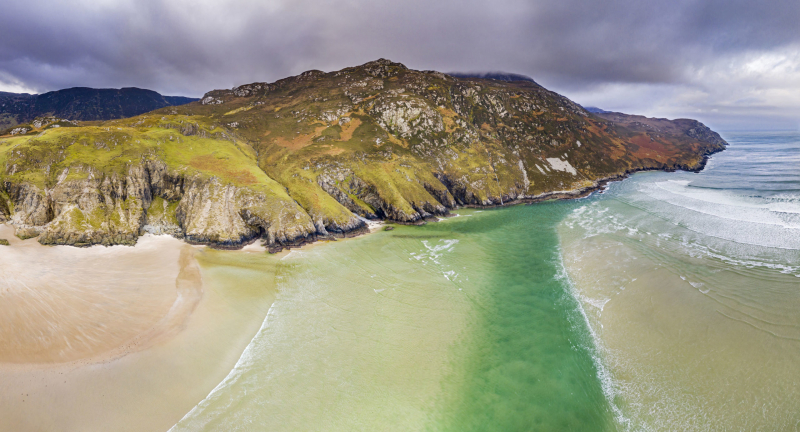
fr.depositphotos.com -
The Marble Arch Caves are a series of natural limestone caves in County Fermanagh, Northern Ireland, near the village of Florencecourt. The caves take their name from the nearby Marble Arch, a natural limestone arch at the upstream end of Cladagh Glen, through which the Cladagh River flows. The Cladagh caves are formed by three rivers that drain from the northern slopes of Cuilcagh Mountain and join underground to form the Cladagh. On the surface, the river flows from Ireland's largest karst resurgence and one of the largest in the United Kingdom. The Marble Arch Caves are the longest known cave system in Northern Ireland, stretching 11.5 kilometers (7.1 miles), and the karst is considered to be among the best in the British Isles.
Visitors can explore a spectacular underworld of rivers, waterfalls, and winding passages at the Marble Arch Caves European Geopark in County Fermanagh. The 75-minute tours are led by expert guides. Electric-powered boats transport visitors through the vast caverns along the subterranean Claddagh River. There is also an exhibition area, an audio-visual theater, a gift shop, and a restaurant on the premises.
Location: County Fermanagh, Northern Ireland
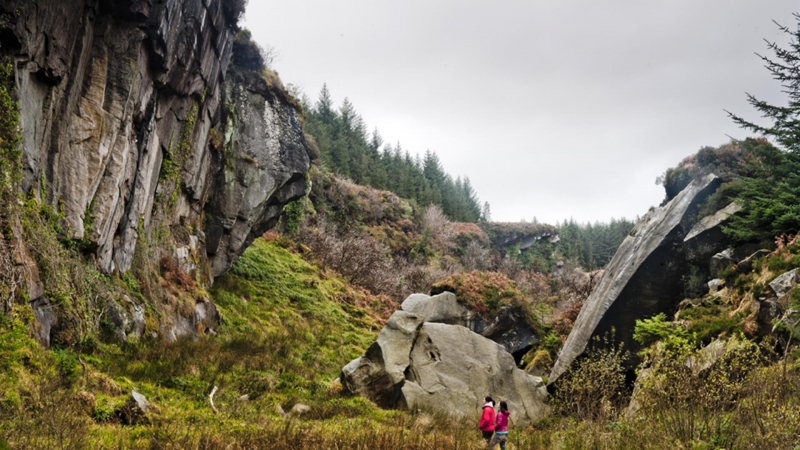
tripadvisor.com 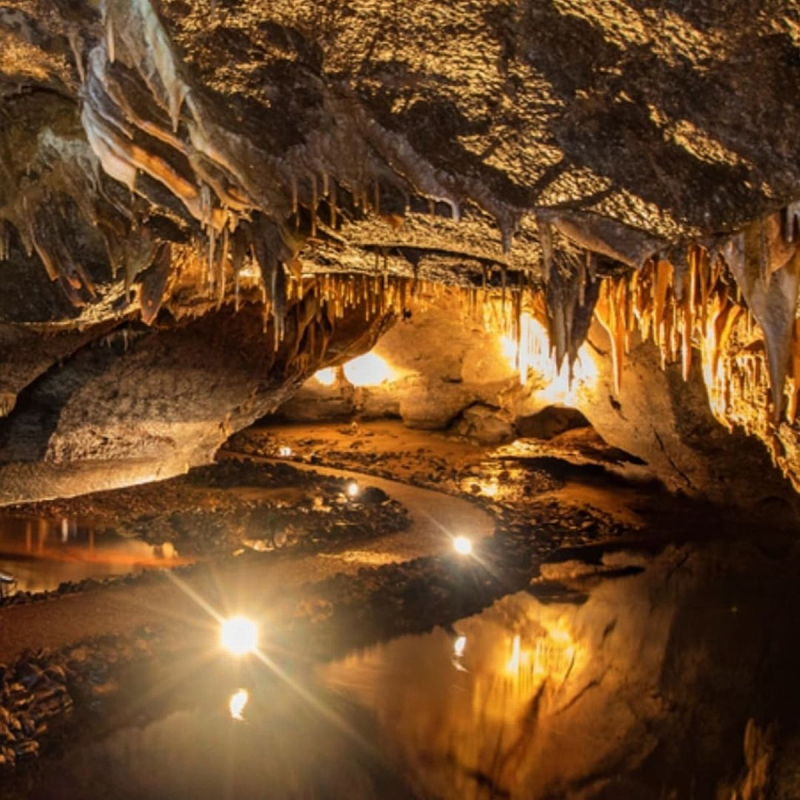
tripadvisor.com -
Crag Cave, located in Castleisland, County Kerry, was discovered in 1983 and is estimated to be over one million years old. It is one of the Most Beautiful Caves in Ireland and one of Ireland's longest caves, with two levels. Guides lead visitors on 30-minute tours through 400m of the 3.8km-long cave, allowing them to see the stalagmites and stalactites. Bring a coat because the temperature inside the cave is around 50 degrees Fahrenheit! The Crag Cave visitor center includes a restaurant and gift shop.
While the Geological Survey of Ireland recognized the presence of "caves worn by water, some of which can be traversed for some distance" in 1859, positive exploration efforts did not begin until 1981, when the upper part of the cave was explored to a sump known as the "Green Lake." When hydrological testing of water in both the cave's active stream way and the sump revealed that the two were chemically distinct, it was hypothesized that the sump was only "perched" above the water table and that further dry passage could be found on the far side. Martyn Farr dived the sump in 1983, providing the first access to the large caverns beyond. A nearby boulder obstruction was cleared, allowing a dry connection into the new chambers. Following the breakthrough, 1.6 kilometers (1 mile) of the passageway were explored and surveyed. Further exploration and surveying between 1981 and 1985 increased the cave's total length to 3.81 km (2.37 mi), with a vertical range of approximately 15 m. (49 ft). The entire cave system runs beneath Castleisland, beginning at Glounsharoon and ending on the outskirts of town at the Killarney Road.
Location: Crag, Castleisland, Co. Kerry, Ireland
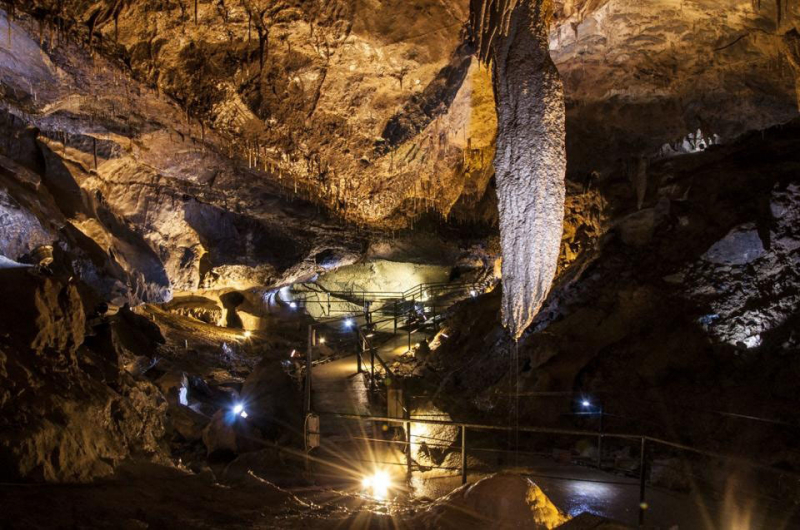
cragcave.com 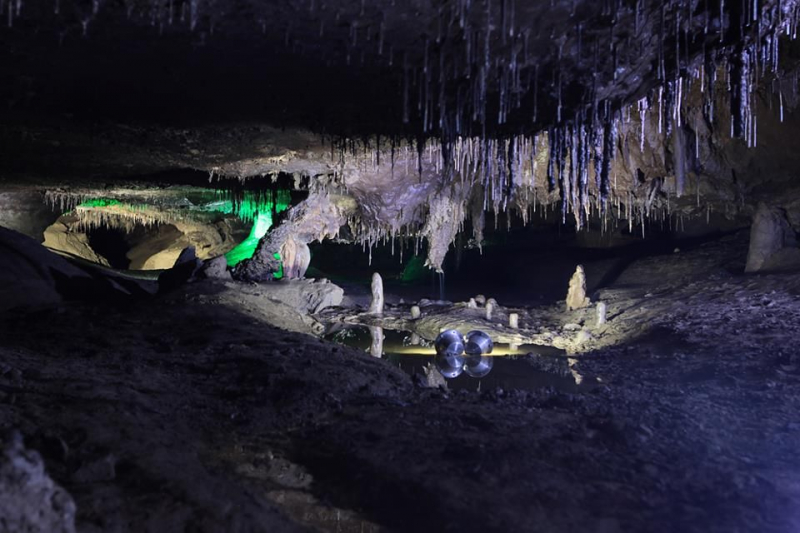
cragcave.com -
Dunmore Cave, in Ballyfoyle, Co Kilkenny, is a National Monument with some of Ireland's finest calcite formations. Man has known about the cave, which is made up of a series of chambers formed over millions of years, for centuries. It has a massive and intimidating entrance and was described in folklore as "the mouth of a huge beast, with ten thousand teeth above his head and as many beneath his feet."
The cave, which was first mentioned in the Irish Triads of the ninth century, has a long and illustrious history. Godfry and the Vikings of Dublin raided the cave in 928 AD. During the raid, 1,000 people were slaughtered, and numerous human bones discovered in the cave are believed to be the victims' remains. In Old Irish literature, the cave is known as one of the darkest places in Ireland, and it is said to be where the monster Luchtigern, 'the Lord of the Mice,' was slain. The Dunmore Cave is open to the public and features a visitor center with exhibitions and displays.
Location: Castlecomer Rd, Inchabride, Kilkenny, Ireland
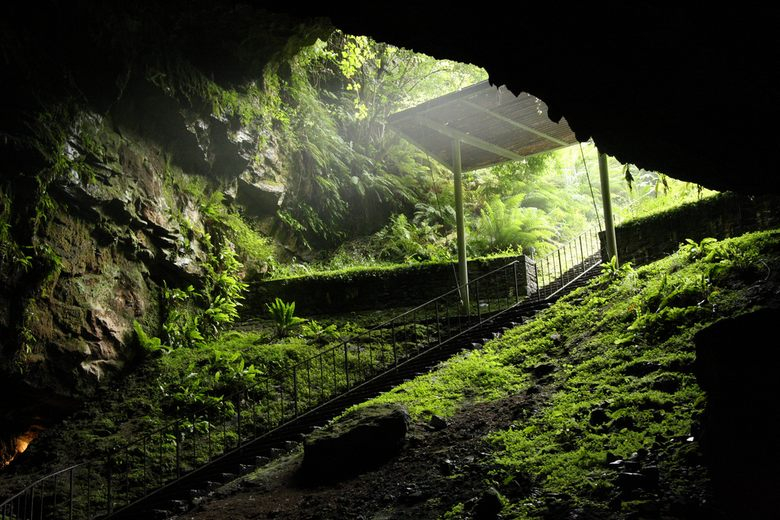
heritageireland.ie 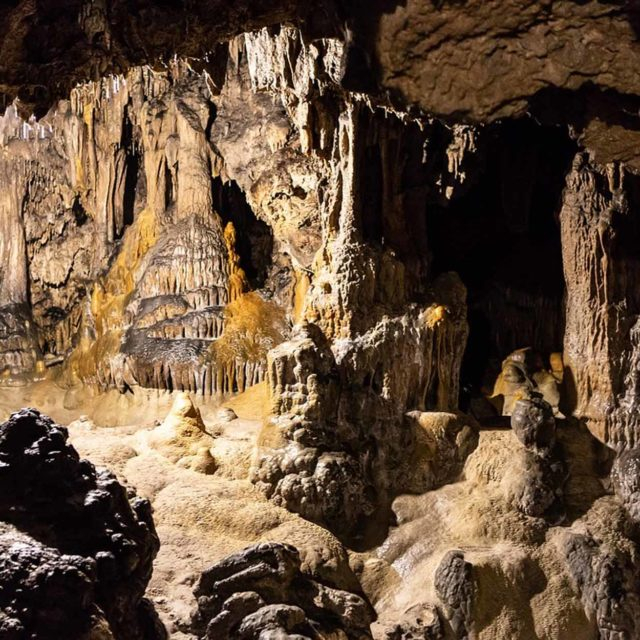
heritageireland.ie









